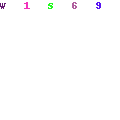

LEVEL C: (YELLOW ZONE): Select when the contaminant and concentration of the contaminant are known and the respiratory protection criteria factors for using Air Purifying Respirators (APR) or Powered Air Purifying Respirators (PAPR) are met.Coveralls, long underwear, a hard hat worn under the chemical-resistant suit, and chemical-resistant disposable boot-covers worn over the chemical-resistant suit are optional items.A hooded chemical-resistant suit that provides protection against CBRN agents.It differs from Level A in that it incorporates a non-encapsulating, splash-protective, chemical-resistant splash suit that provides Level A protection against liquids but is not airtight. This is the minimum protection for workers in danger of exposure to unknown chemical hazards or levels above the IDLH or greater than AEGL-2.
#Mercury card skin#
LEVEL B: (RED ZONE): Select when the highest level of respiratory protection is necessary but a lesser level of skin protection is required.Coveralls, long underwear, and a hard hat worn under the TECP suit are optional items.Chemical-resistant boots with a steel toe and shank.A Totally-Encapsulating Chemical Protective (TECP) suit that provides protection against CBRN agents.A NIOSH-certified CBRN full-face-piece SCBA operated in a pressure-demand mode or a pressure-demand supplied air hose respirator with an auxiliary escape bottle.This is the maximum protection for workers in danger of exposure to unknown chemical hazards or levels above the IDLH or greater than the AEGL-2. LEVEL A: (RED ZONE): Select when the greatest level of skin, respiratory, and eye protection is required.

NOTE: Safe use of protective clothing and equipment requires specific skills developed through training and experience. Level A protection should be used until monitoring results confirm the contaminant and the concentration of the contaminant.

It can be obtained by heating mercury containing ores and condensing the vapors.


 0 kommentar(er)
0 kommentar(er)
